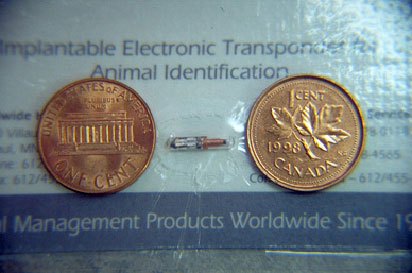
Microchip Implants
Microchips have become a very popular and safe way to permanently identify your pet and you as the owner in the unfortunate case that your pet is lost. Microchipping involves placement of a small electronic chip the size and shape of a piece of rice just under the skin in the neck area. A needle is used to inject the chip. The injection is comparable to a regular vaccine injection.
If your pet becomes lost and is transported to a humane society, the humane society will be able to scan your pet for the chip and contact you. The scanner is similar to a scanner found in the grocery store.
We advise you to use this system of identification as well as a collar identification system on your pet.
Tattooing
Tattooing is a valuable and permanent way of identifying your pet. Tattoos are placed in the right ear and commonly done in cats, dogs, and rabbits. They are discrete but visible which allows for easy identification of your pet while not getting in the way of their wonderful good looks!
The College of Veterinarians of BC has developed a provincial wide way of tracing pets with tattoos back to their owners. If a pet is lost, stolen or injured on the road anyone in the community can contact their local SPCA or Veterinary Hospital and have them look up the pet’s tattoo number and contact their people. Many pets have been returned to their loving homes thanks to their identifying tattoo days, months and in some cases even years after they’ve gone missing!
Having a tattoo placed in your pet’s ear is done under anaesthetic so it’s simple, neat and most importantly pain free. The recommended time to tattoo your pet is while they are already undergoing an anesthetic such as during their spay or neuter, or dental assessment and cleaning.
Identification Tags:
We now carry the Red Dingo line of pet identification tags. They are stylish and durable. Check out our samples and order one today!
Tags are an additional method of helping your pet get back home. Please remember that these are NOT permanent identification of your pet, as collars can be lost or removed.
